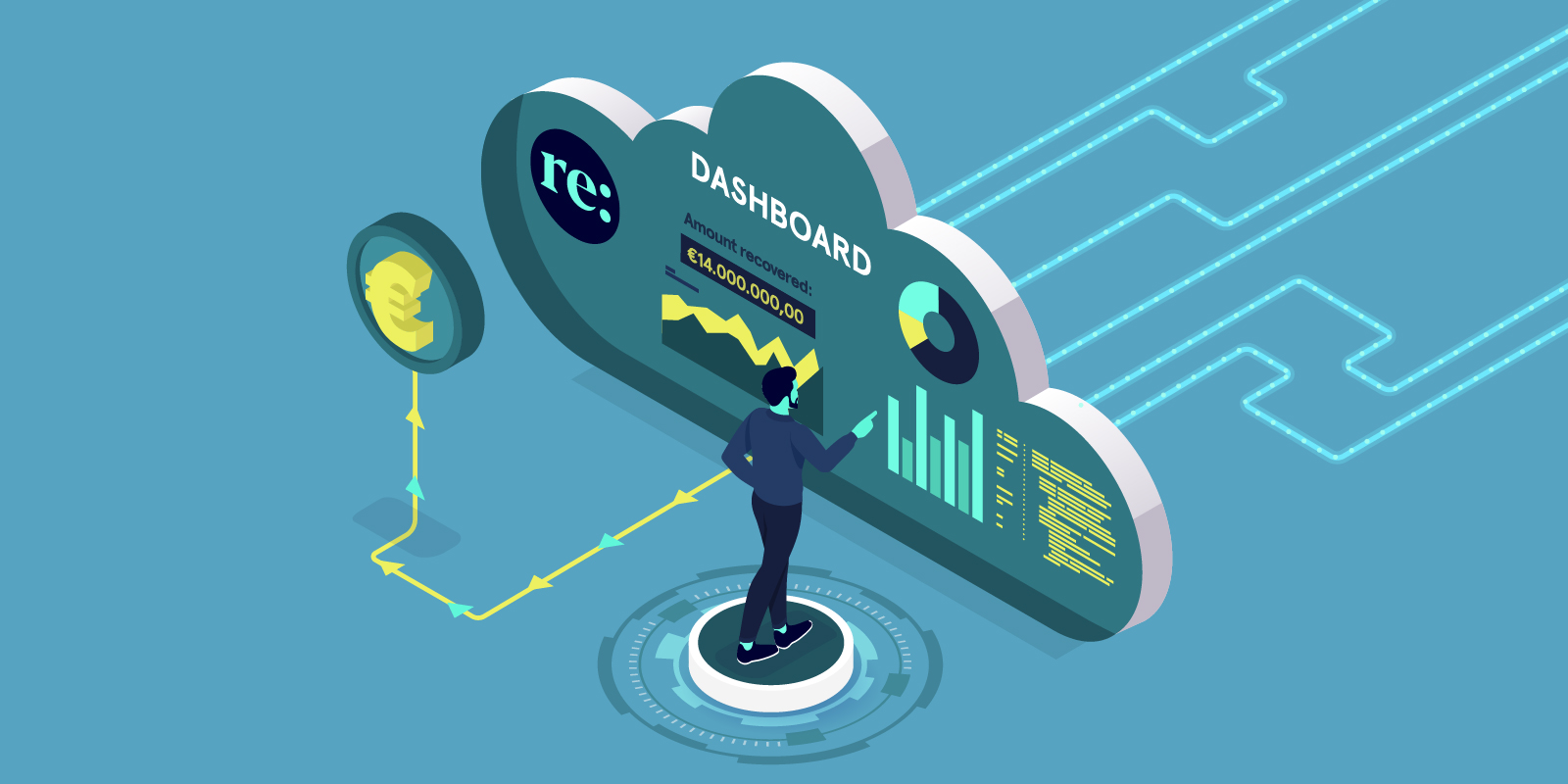2.5 quintillion bytes of data is created each and every day. However, data on its own is of little use—the real magic happens when you turn raw data into tangible assets that add value to your business. As such, data analysis is the bedrock of any modern organisation.
But how does this affect collections? Through data analysis, lenders will begin to understand their past-due customers in granular detail: their preferences, their habits, their dislikes, and their wishes. Armed with these data-driven insights, they can begin to craft a range of collections outreach strategies based on quantitative, objective insights rather than qualitative (and subjective) feelings. This will help them ultimately increase their revenue and repayment rates while simultaneously decreasing the time, effort, and money spent chasing past-due customers.
Throughout this blog post, we’re going to examine why data analysis is such a hot topic right now, why it’s so potent within collections, how to turn your data into valuable assets, and the effect it can have on your bottom line.
The Data Directive
The biggest companies turn customer data into their competitive advantage. Over the past five years, Spotify’s personalised ‘Discover Weekly’ playlists have been listened to for a combined 2.3 billion hours. In fact, a large part of Netflix and Amazon’s massive success is down to their commitment to providing each individual user with their very own customised experience.
Likewise, data has also been crucial in facilitating customised digital contacting at scale. Prescriptive analytics enables companies to leverage artificial intelligence (AI), machine-learning (ML) and human capabilities to maximise their outreach strategy. Guided by their internal data, companies know how to get in touch with the right buyer, at the right time, with the right content. These days, you can even see which keywords are likely to be most successful with each individual buyer.
Data-driven communication strategies are a modern necessity, not simply a nice-to-have. Studies suggest that emails with personalised subject lines lead to 50% higher open rates. When it comes to financial services, 80% of consumers have stated that they’d prefer to do business with companies that offer personalised communication.
Turning data into valuable insights is the key to unlocking your business’s potential. You’ll better understand your customers, which in turn helps you better serve them—and if you do this, then you can’t go wrong.
Data-Driven Collections
It’s clear that data can help companies better sell to customers. They know which products to recommend, which outreach channels work best, and which offers might pique an individual customer’s interest. So why are lenders failing to use their data when it comes to ensuring that their customers pay them back?
Most lenders have access to a wealth of data at their fingertips. This might include a past-due customer’s balance history, days past due, contact preferences, and past purchasing behaviour. But what if you’re thinking: “Wait, we don’t have any of this data?”. Well, if you’re a lender, then you probably do—though you might not be aware of it yet. Often, this lack of awareness stems from the raw and unprocessed nature of the information in hand. Once this information is correctly processed—segmented, saved, and digitised—then it becomes valuable business data.
Alternatively, you might be aware of your data but perhaps it’s just not readily processable as of now. Once it goes through this process, however, you can use it to segment all past-due customers into like-minded groups before crafting tailored outreach strategies that are likely to work best with each segment.
For example, your segments might look as follows:
Segment A:
- Average age of 25
- Have bought from you before
- Around a week overdue—most of their previous repayments have been 2 weeks overdue
- They prefer to be contacted via text (and generally browse, purchase, and pay on their smartphones)
- They respond well to constant friendly nudges as they tend to quickly forget reminders
Segment B:
- Average age of 50
- Have bought from you before
- A few days overdue
- Most of their previous repayments have arrived within a week after the due date
- They prefer to be contacted via email or with letters through the door (and generally browse, purchase, and pay on their laptops)
- They respond well to loss-aversion style messaging
It’s obvious that you shouldn’t employ the same strategies for Segment A as for Segment B. Segment A will require frequent texts, emails, and push notifications that are helpful, friendly, and guide them through the repayment process. Segment B, however, won’t need as many reminders.
When you do send one, it should probably be via an email and feature substantially different messaging to the reminders that Segment A receives. If there are certain individuals in Segment B that don’t open any of your emails, then you could consider sending a letter (with a corresponding QR code attached) as a last resort.
Turning your Collections Data into Assets
If you’re looking to maximise value from your collections data and turn them into useful insights going forward, you’ll need to take a blended approach: expertly combining both humans and machines/automation.
Large datasets can instantly be processed and analysed by AI/machine-learning algorithms. Once this data has been processed and patterns begin to emerge, it’s ultimately up to humans (in the form of data analysts) to decide how these insights affect your collections strategy.
Data analysts are worth their weight in gold. The best will have two primary qualities:
- An ability to spot critical patterns emerging from a wealth of consumer data
- A gift for communicating what needs to be done with the rest of the business
As HBR states: “Analysts are data storytellers. Their mandate is to summarise interesting facts and to use data for inspiration. In some organisations those facts and that inspiration become input for human decision-makers.”
When it comes to collections, the insights gathered from your consumer data will help you decide whom to contact, on which channels, when, and with which copy. You’ll turn your one-size-fits-all dunning approach into multiple, highly targeted strategies, fine-tuned according to each particular consumer segment.
If you do this successfully, you’ll increase your repayment rates, decrease the time taken to be repaid, and significantly eliminate most of the time, money, and effort spent chasing past-due customers. Simply devise an outreach strategy for each segment, conduct ongoing A/B tests to further develop your strategy, and automate the rest going forward.
It is Time to Reap the Benefits
Consumer data is worthless unless you use it to improve what you do. If you successfully turn raw data into valuable insights, you’ll be able to:
- Accurately segment your consumer/customer base
- Craft extended digital approaches tailored to each segment
- Conduct A/B tests
- Measure and analyse the results on an ongoing basis
- Create the most accurate, most successful strategies for each segment
The potential payoffs are enormous. You’ll increase your repayment rates while eliminating the unnecessary time and effort spent chasing past-due customers. You’ll speak to the right past-due customers, at the right time, on the right channels, and in the right manner. Your Days Sales Outstanding (DSO) will plummet and your revenue will skyrocket.
Do you want to turn customer data into your competitive advantage? If so, keep an eye open for our upcoming webinars on best practices in modern debt collections. Feel free to subscribe below to our blog posts to get the latest updates.
What are you waiting for?






